
Sweet introduction to Real Focus
Sergio Guerrero
1. CONTEXT
In this new article we break down all the compounds that are part of this leading national sales supplement.
As we can see, both Real Nootropic and Real Focus have practically the same ingredients; However, its usefulness is intended for another purpose as we will detail below.
2. INGREDIENTS
What does Real Focus have?
*Per dose of 3.7 gr:
• 610 mg of Rhodiola Rosea
• 500 mg of Citicoline (CDP)*
• 300 mg of Anhydrous Caffeine
• 230 mg of St. John's Wort
• 0.5 mg of Huperzine A
• 9.5 mg of Piperine
*Cytidinediphosphocholine
3. PATHS OF ACTION
If you have read the previous article about Nootropics, you are probably familiar with them or know how most of the ingredients in Focus work.
But what extras does the Focus provide?
As its name indicates, Focus seeks focus, mental attention above any other, but without neglecting the physical part, therefore, the dose of caffeine is greater in Focus than in Nootropic.
In addition to increasing the caffeine dosage, Rhodiola Rosea has been added , the improvement of which is due to its actions, both serotonergic and dopaminergic, thus improving mood and reducing fatigue, as well as improving concentration . As we can see in this randomized, double-blind, placebo-controlled study carried out by Olsson et al. in 2008, (Fig. 1) they selected 60 individuals, men and women between 20 and 55 years old. The first group (n = 30) received four Rhodiola extract tablets daily (576 mg extract/day), while a second (n = 30) received four placebo tablets daily. The effects of the extract with respect to quality of life, symptoms of fatigue (Pines Burnout Scale), depression (Montgomery-Asberg Depression Rating Scale - MADRS), attention (Computerized Continuous Performance Test II - CCPT Conners II) and awakening salivary cortisol response were assessed on day 1 and after 28 days of medication.

- Figure 1: Cortisol response upon awakening in patients with fatigue syndrome showing log mean values of salivary cortisol before and after treatment with respect to time after awakening for (A) placebo group (n = 25) and (B) group treated with R. rosea SHR-5 extract (n = 21) for a period of 28 days. Vertical bars denote standard deviations.
No serious side effects that could be attributed to the extract were reported. Significant improvements after treatment were observed for both groups (placebo effect) on the Pines Exhaustion Scale, Mental Health (SF-36), and MADRS and on several CCPT II attention indices. However, when the two groups were compared, significant effects of Rhodiola extract compared to placebo were observed on the Pines Exhaustion Scale.
Pre- and post-treatment cortisol responses to stress awakening were significantly different in the treatment group compared to the control group; Therefore, it is observed that the administration of Rhodiola Rosea extract exerts an anti-fatigue effect that increases mental performance, particularly the ability to concentrate, and decreases the cortisol response upon awakening from stress in burnout patients with fatigue syndrome.
*You have more information about Rhodiola in the previous article on Nootropics*
Another new feature of the Focus is the addition of St. John's Wort, or St. John's Wort. This plant has been and is the subject of numerous criticisms, since it is related to pharmacological interactions with substrates of several cytochrome (CYP) P450* isoenzymes.
*Mainly responsible for the metabolism of most drugs
To put ourselves in context, St. John's Wort or St. John's Wort is presented in the Focus for its bioactive compounds, such as hypericin, hyperforin and adhiperforin: These biocomponents seem to increase the levels of neurotransmitters such as serotonin, dopamine and norepinephrine, improving the state of mood both physically and mentally. The addition of St. John's wort to Focus , in addition to increasing serotonin and catecholamines, also acts by inhibiting acetylcholinesterase (AChE) (Fig 2), as does Huperzine A. On the other hand, the bioactive compounds that are part of the St. John's Wort, prevent the degradation of the administered components , since they work by selectively inhibiting certain enzymes; which is why there is so much controversy with this compound.

- Figure 2: Effect of AChE inhibition on ACh in the synaptic cleft.
As a summary we could say that the mechanisms of St. John's wort include the inhibition of the reuptake of serotonin (5-HT), dopamine (DA), norepinephrine (NE) in the synaptic cleft, binding to GABA-A and GABA- B thus inhibiting the binding of GABA ligands, increasing the density of 5-HT2 receptors in the frontal cortex of the brain and inhibiting the enzymes monamine oxidase (MAO) and catechol-O-methyltransferase (COMT) in the brain, which which allows you to convert more Dopamine into Norepinephrine.
Regarding drug interactions with substrates of various hepatic cytochrome P450 (CYP) isoenzymes, everything depends on the administration dose. Even using typical doses of 300-1200 mg/Day, they only seem to affect the hepatic CYP3A isoenzyme (Wang Z. et Al, 2008); As an extra fact, capsaicin is another inhibitor of this isoenzyme.
It is safe?
If we go to the page of the Spanish Agency for Medicines and Health Products (AEMPS) we find that:
“Until more information is available, the possibility cannot be ruled out.”
possibility of an interaction between Hypericum perforatum and other products
medicinal products that are metabolized by certain cytochrome P450 isoenzymes.”
"Waiting for the European Committee for Pharmaceutical Specialties to take
a decision in this regard, the Spanish Medicines Agency recommends the
following":
• Patients treated with antiretroviral drugs for the treatment of their HIV infection should not take Hypericum perforatum as this could cause a loss of therapeutic effect and the development of resistance.
• Women using oral contraceptives are advised not to take Hypericum perforatum, as this could lead to a loss of contraceptive effect.
• Patients who are being treated with any medication should consult with their doctor or pharmacist before starting to use products with Hypericum perforatum.
• Patients who are already taking Hypericum perforatum products and medications concomitantly should not stop taking Hypericum perforatum without first consulting their doctor.
• The withdrawal of Hypericum perforatum could cause an increase in the plasma levels of these medications. In some cases this could trigger the subsequent toxicity (especially in the case of drugs with a narrow therapeutic range such as cyclosporine, digoxin, theophylline and warfarin).”
Good, but what dose would we be talking about? And for how long?
As a “general” rule and based on the literature studied, the doses would be between 300-1200 mg/day. Therefore, it is far from the 230 mg/dose used in the Focus. To conclude, and as stated in the current literature , “The intake of St. John's Wort when taken orally, in the recommended doses, is probably safe even if taken for more than a year.”
4. SIDE EFFECTS
Like almost everything in life, it depends on the dose. That is why it is important to follow the guidelines recommended by the manufacturer. In this case, at BIG we recommend using half a dose and checking tolerance.
Among the side effects that could occur due to abuse of the product is mainly motion sickness . Motion sickness is simply a dizziness, similar to that which occurs when traveling, in fact, it is called motion sickness and which occurs in some people, whose symptoms are: vertigo, nausea and vomiting .
REFERENCES
- Apaydin, EA, Maher, AR, Shanman, R., Booth, MS, Miles, JN, Sorbero, ME, & Hempel, S. (2016). A systematic review of St. John's wort for major depressive disorder. Systematic reviews, 5(1), 148. https://doi.org/10.1186/s13643-016-0325-2
- https://www.drugs.com/npp/st-john-s-wort.html
- https://www.mayoclinic.org/drugs-supplements-st-johns-wort/art-20362212
- https://www.webmd.com/vitamins/ai/ingredientmono-329/st-johns-wort
- Jobst, Kim A et al. Safety of St John's wort (Hypericum perforatum). The Lancet, Volume 355, Issue 9203, 575
- Klemow KM, Bartlow A, Crawford J, et al. Medical Attributes of St. John's Wort (Hypericum perforatum) In: Benzie IFF, Wachtel-Galor S, editors. Herbal Medicine: Biomolecular and Clinical Aspects. 2nd edition. Boca Raton (FL): CRC Press/Taylor & Francis; 2011. Chapter 11. Available from: https://www.ncbi.nlm.nih.gov/books/NBK92750/
- Ng QX, Venkatanarayanan N, Ho CY. Clinical use of Hypericum perforatum (St John's wort) in depression: A meta-analysis. J Affect Disord. 2017 Mar 1;210:211-221. doi: 10.1016/j.jad.2016.12.048. Epub 2017 Jan 3. PMID: 28064110.
- Olsson, Erik MG, Schéele BB, Panossian, A. A Randomised, Double-Blind, Placebo-Controlled, Parallel-Group Study of the Standardized Extract SHR-5 of the Roots of Rhodiola rosea in the Treatment of Subjects with Stress-Related Fatigue
- Roseiro, Luísa Bivar, Rauter, Amélia Pilar, and Serralheiro, Maria Luísa Mourato. 'Polyphenols as Acetylcholinesterase Inhibitors: Structural Specificity and Impact on Human Disease'. 1 Jan. 2012: 99 – 111.
- Suhaili Shamsi, Huong Tran, Renee Seok Jin Tan, Zee Jian Tan and Lee Yong Lim. Comparative Study of Spice-Mediated Inhibition of Human P450. Drug Metabolism and Disposition January 1, 2017, 45 (1) 49-55; DOI: https://doi.org/10.1124/dmd.116.073213
- Wang Z, Gorski JC, Hamman MA, Huang SM, Lesko LJ, Hall SD. The effects of St John's wort (Hypericum perforatum) on human cytochrome P450 activity. Clin Pharmacol Ther. 2001 Oct;70(4):317-26. PMID: 11673747.




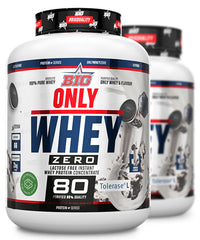
![CREABIG [Creapure®]](http://bigsupps.site/cdn/shop/products/producto_BIG_creabig_creapure_250g_0noflavour_500x600_8c48a126-a2a2-46a5-9bbd-8763ab82d768_200x.jpg?v=1757315967)
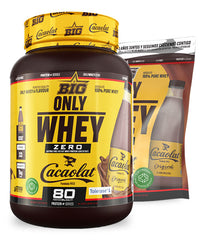
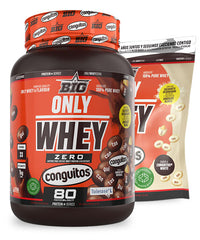
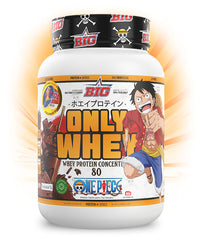
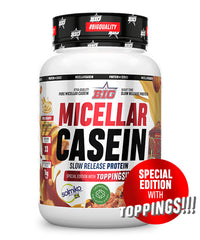
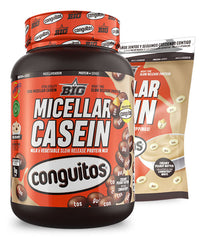
![CFM ISO ZERO [saco]](http://bigsupps.site/cdn/shop/files/producto_cfm_doypack_0noflavour_500x600a_200x.jpg?v=1750981452)
![CLEAR ISO ZERO [750g]](http://bigsupps.site/cdn/shop/files/producto_BIG_clearprotein_icepop_0noflavour_500x600a_200x.jpg?v=1757074297)
![CREABIG FIESTA® KOJAK® flavor - [250g]](http://bigsupps.site/cdn/shop/files/producto_BIG_creabig_kojak_0noflavour_500x600a_200x.jpg?v=1763548822)


